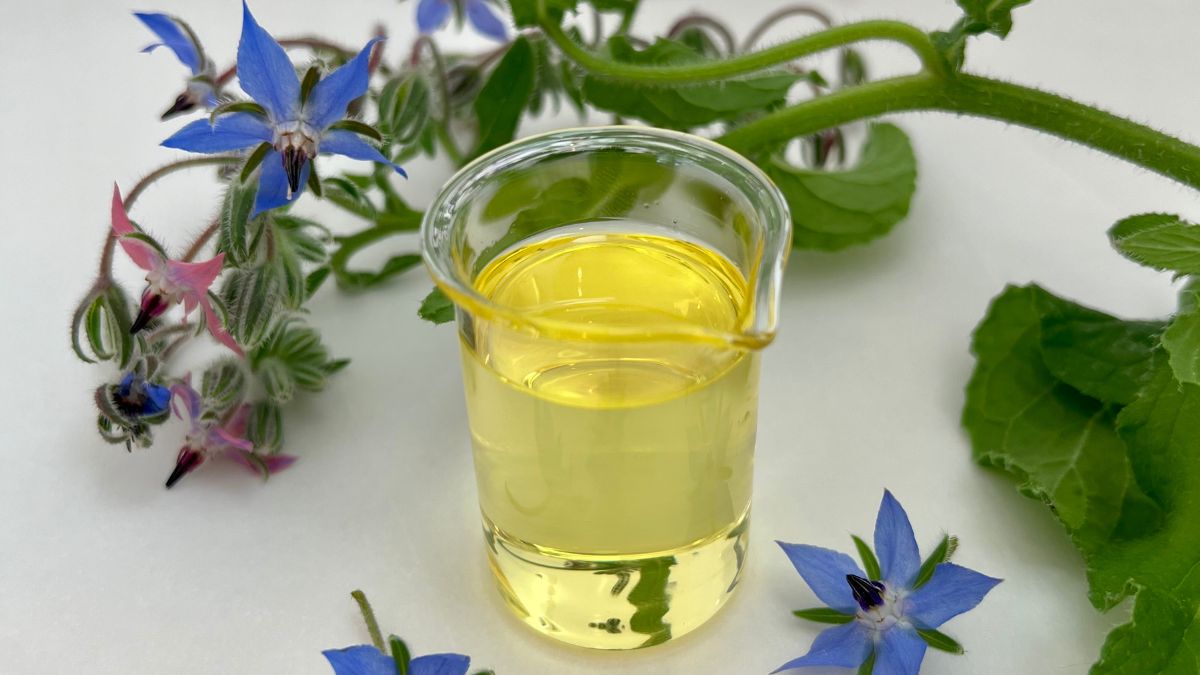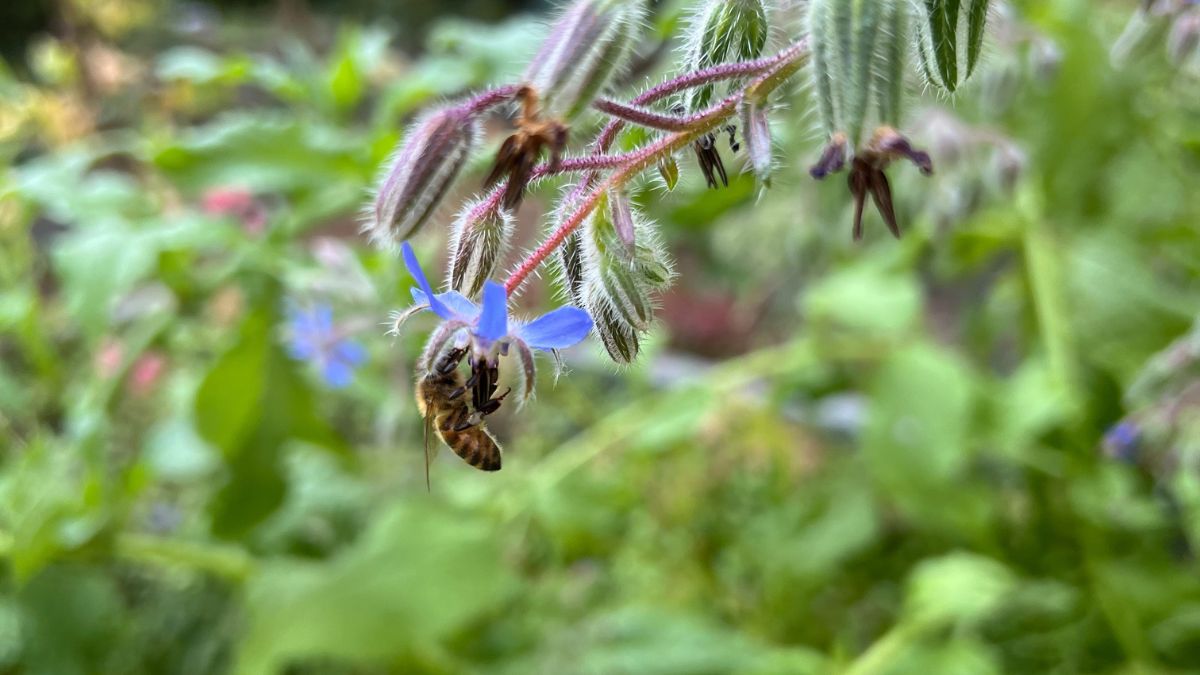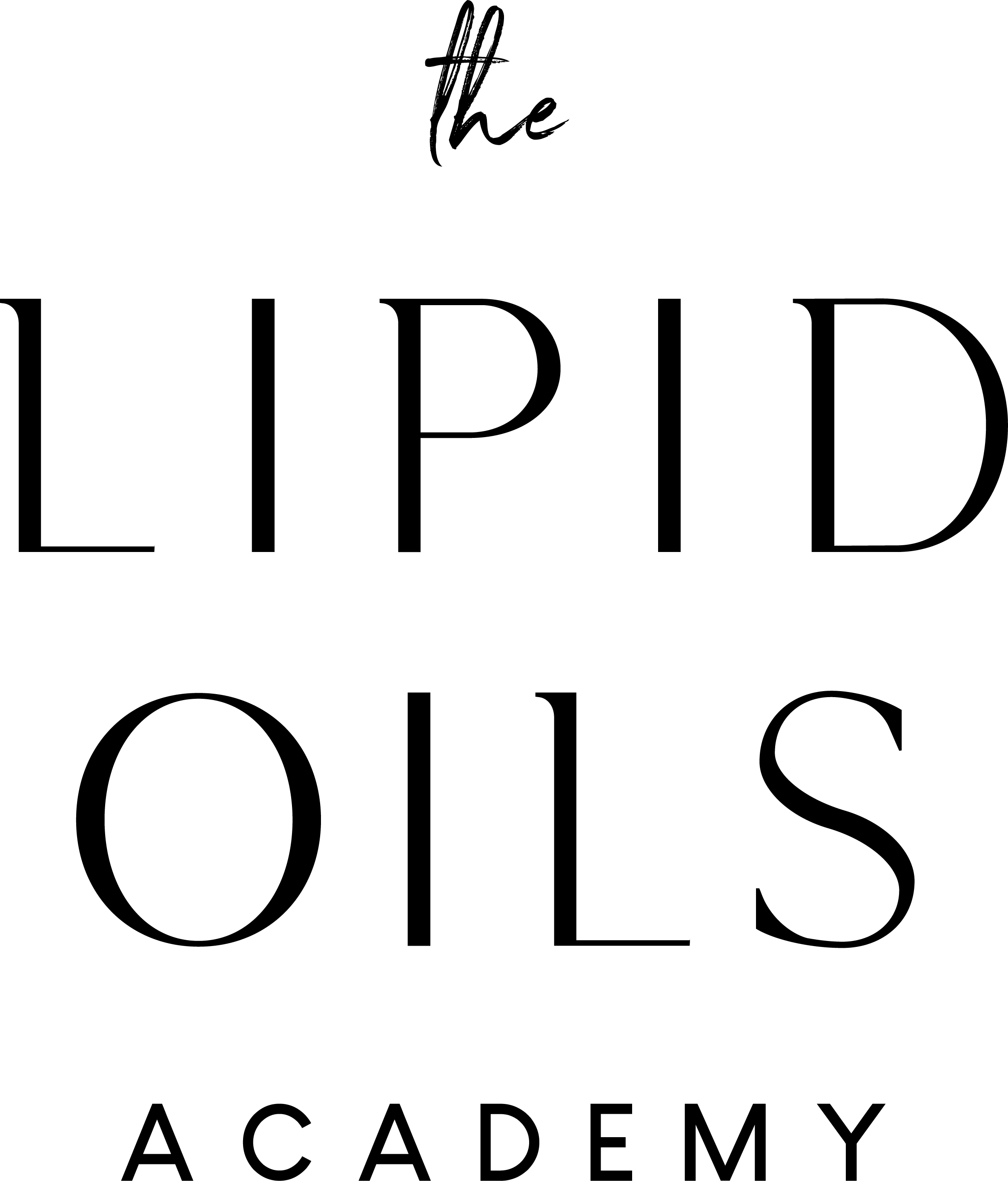In my last post, I shared a recipe for an anti-inflammatory body oil made with Evening primrose oil.
Today I'd like to introduce another oil with similar properties: Borage seed oil.

Borage seed oil
The common link between the evening primrose oil and Borage seed oil is GLA, a fancy acronym for gamma-linolenic acid. You can also see it with the Greek letter y for gamma, γ-linolenic acid. GLA is a valuable oil as it helps repair wounds and minimize scarring.
But that is not all. It is also the secondary bridge fatty acid between linoleic and DGLA. As part of the lipid pathway in the body and on the skin, it is important for its anti-inflammatory and immune-supporting properties.
Borage seed oil is an omega-6 fatty acid and one of the polyunsaturated fatty acids necessary for our health.
Because of its multiple double bonds, the oil has a short shelf life compared to other oils and should be stored in a cool, dark place. Use the oil within six months to a year and avoid strong light and heat.

In the Middle Ages, travelers were given a drink made from Borage flowers and leaves as they appeared at the gates of welcoming monasteries, the Air BnBs of the day. This practice gives us a hint of the powers of the plant and the oil as well as strength and courage after an arduous journey, often by foot. Borage comes from borago, which was originally courago, for courage.
3 Oils High in EFA's
Below is a short description of three carrier oils high in the GLA essential fatty acid.
Evening Primrose Oil
Evening Primrose Oil was the first oil to have a high enough percentage of gamma-linolenic acid (GLA) fatty acid to correct a deficiency in the body.
Thirty years ago, it was a popular supplement for women's hormonal support.
Evening primrose oil has between 10 and 12% GLA in its fatty acid makeup.
Black Currant Oil
Black currant seed oil is another high GLA oil, accounting for about 17% to 20% of the oil's fatty acid content.
Black currant is native to England and northern Europe. The anti-inflammatory properties of GLA and plant phytosterols support collagen and skin regeneration by absorbing into the tissues quickly. Acting as an anti-aging agent, black currant seed oil helps maintain a healthy skin tone.
Borage Seed Oil
Borage seed oil has the highest GLA percentage of these three oils, upwards of 25%. Plus, borage seed oil has a high percentage of polyunsaturated fatty acids that help the oil absorb quickly into the skin, taking the beneficial lipid compounds and EFA's deeply into the epidermis.

So appreciate you sharing information on different oils.
these posts are great. thanks!